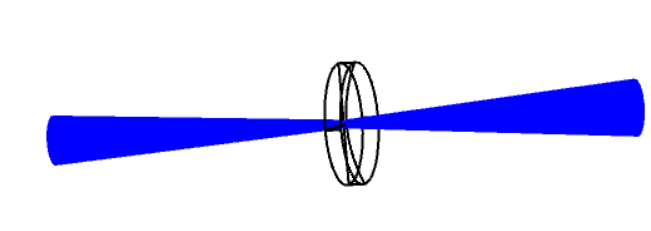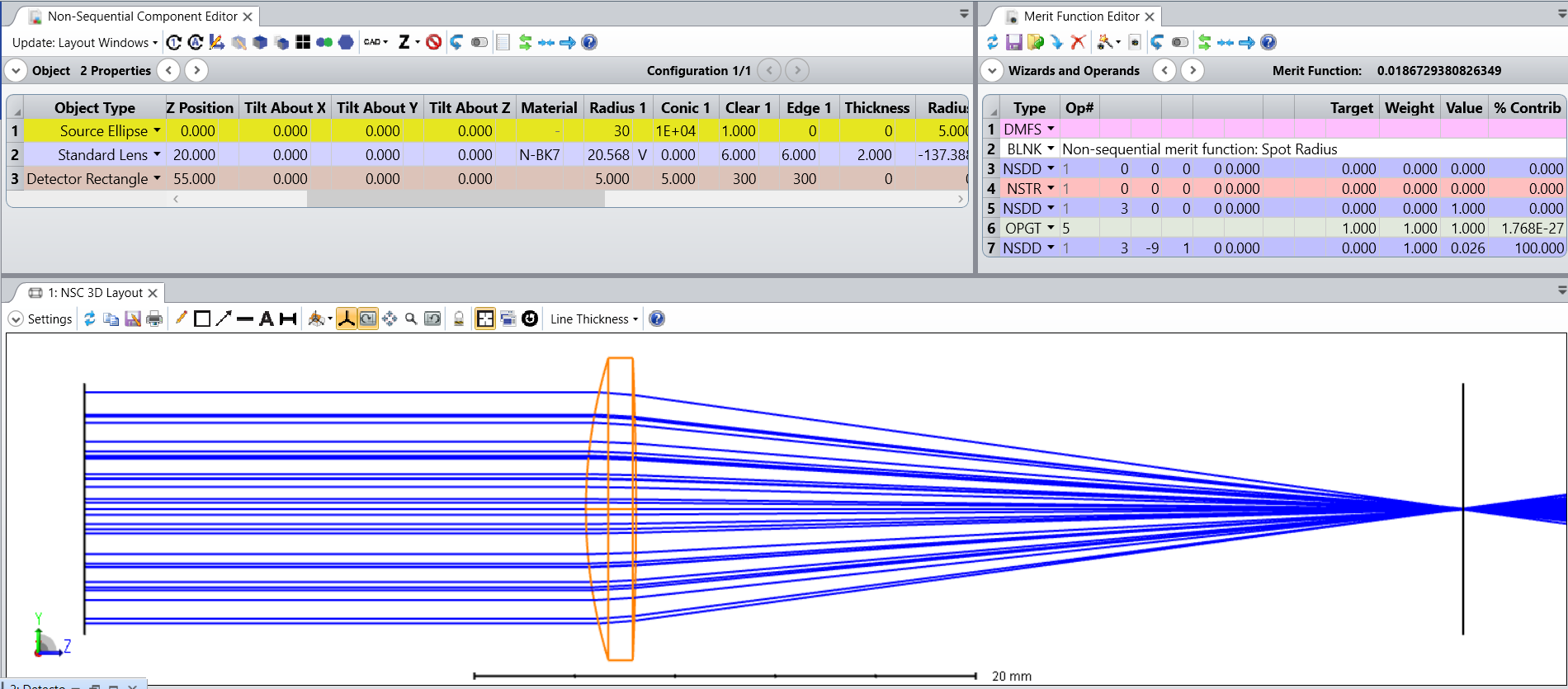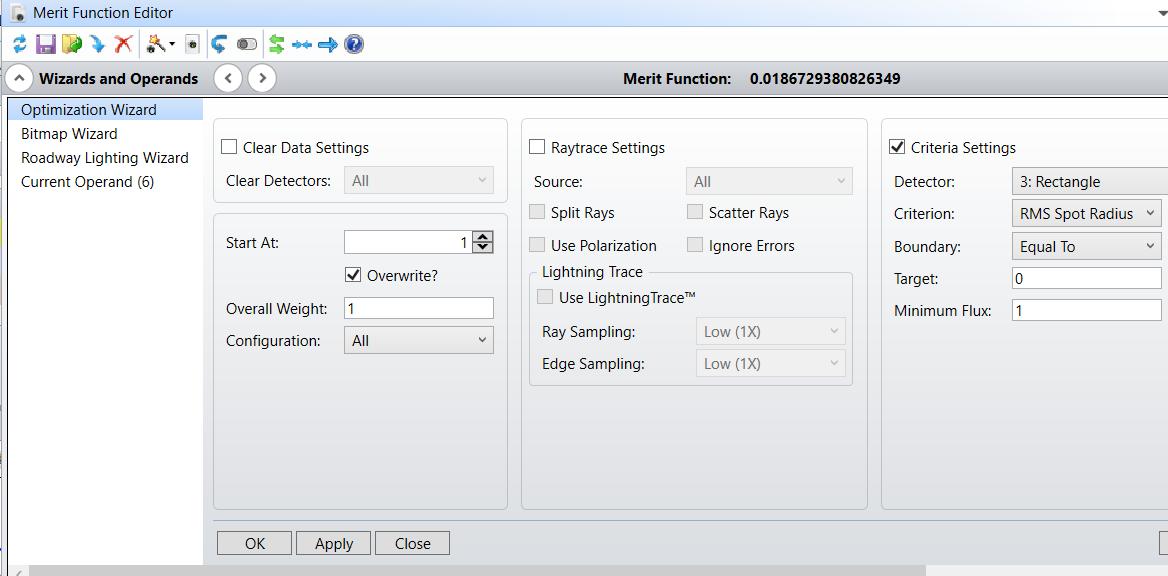
My standard lens for converging light beams is shown in the figure, but it doesn't seem to be able to converge?


My standard lens for converging light beams is shown in the figure, but it doesn't seem to be able to converge?

Best answer by David
Hi DDDD,
Perhaps an example will help. The attached zip contains a zar file implementing a non-sequential design for a focusing lens. A source ellipse emits a collimated beam of rays which encounter a Standard Lens of BK7 material. After passing through the lens the rays encounter a detector rectangle which will be used to measure the RMS Spot Radius of the beam on the detector.
The front and back radii of the lens are made variable. The thickness is fixed. (It is a weak variable.)
The Optimization Wizard in the Merit Function Editor is used to generate a merit function. The merit function targets the RMS Spot Radius on the detector to be zero, and also targets the total flux of the detector to be 1 watt, which is the power of the source.
The design is then optimized using Orthogonal Descent.
This sort of design is generally best done in sequential mode, with the resulting file converted to non-sequential using the Convert to Non-Sequential tool if necessary.
Here is the design:

This is the the Optimization Wizard used to produce the Merit Function:
Edit: For the first use of the wizard, clear data and trace are checked.

And here is the Merit Function after optimization:

Enter your E-mail address. We'll send you an e-mail with instructions to reset your password.